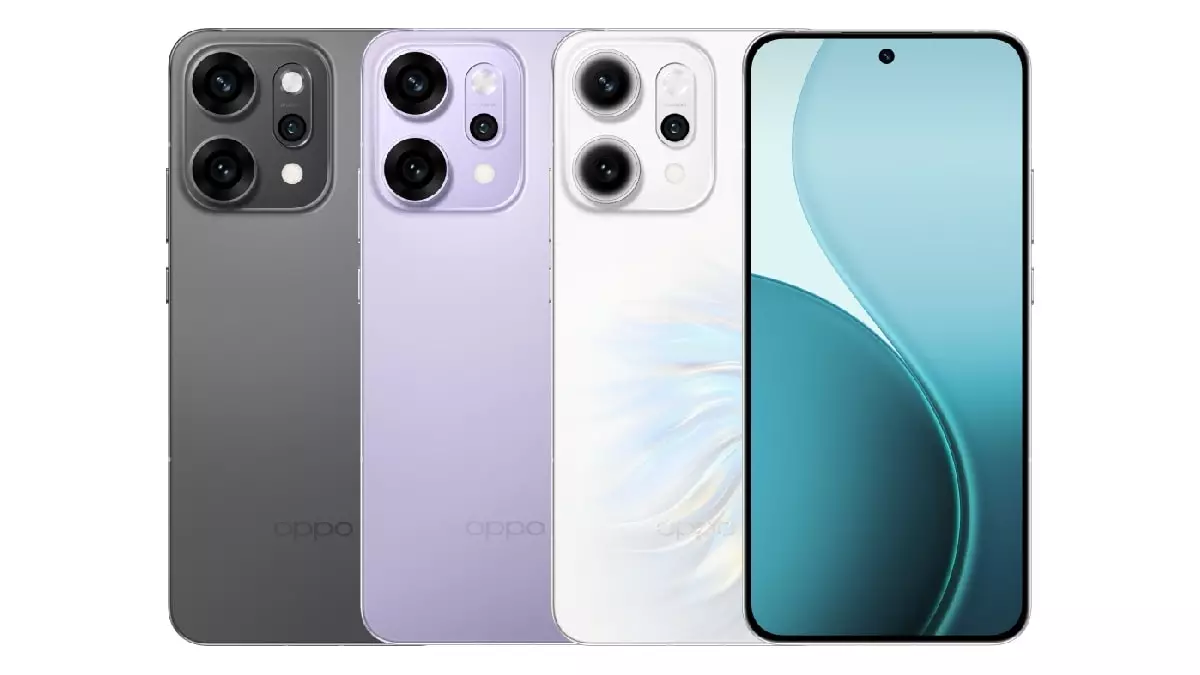As the smartphone industry continues to saturate with new devices seemingly every month, the Oppo Reno 14 series emerges with what looks like an impressive lineup on paper. Yet, the true test lies beyond the boasts of megapixels and sleek designs—it’s about whether Oppo genuinely delivers innovation that resonates with a discerning, educated audience. While the company teases AI-powered features and powerful camera modules, one can’t help but feel skeptical about whether these additions are more about marketing fluff than substantial advancements that justify their price tags.
The planned launch in India on July 3 is clearly an effort to reclaim spotlight in a fiercely competitive segment. However, in a world where consumers are increasingly savvy, can Oppo’s strategy of incremental upgrades and high-spec sheet really persuade users that this device is a worthwhile upgrade? Far too often, manufacturers rely on buzzwords like “AI-powered” and “superb cameras” without addressing the core question: do these features enhance everyday usability convincingly, or are they just window dressing?
The Price Tag and Market Signaling
Looking at the rumored prices—roughly Rs. 33,200 for the base model in China, with pro variants crossing Rs. 40,000—raises eyebrows. Is this a smart move when flagship competition is offering more at similar or even lower prices? Oppo’s pricing strategy seems to echo a broader industry trend: a premium on perceived innovation rather than tangible, groundbreaking features.
Charging a premium based solely on camera specs, a sizable AMOLED display, or AI features risks alienating the very audience Oppo aims to target—tech enthusiasts and mid-range buyers looking for value. The question is whether consumers will accept these hefty prices when the core upgrades are within reach of recent flagship offerings from other brands. It’s crucial for Oppo to clearly differentiate itself—not just through specs but through user experience and longevity.
Design and Hardware: Are the Specs Truly Next-Gen?
From a hardware perspective, the Oppo Reno 14 series impresses with its large OLED screens, up to 16GB of RAM, and substantial storage options. The inclusion of a 50-megapixel camera system with OIS and optical zoom on the standard model is noteworthy. Yet, are these features enough to stand out amid comparable devices from Xiaomi, Samsung, or OnePlus?
The design language, while sleek, remains within industry norms—flat screens, punch-hole cameras, andan emphasis on premium materials. The real question lies in whether Oppo’s Crystal Shield Glass (a marketing highlight) and the AI camera features truly enhance the user’s experience or are just incremental improvements added to justify higher prices.
Battery capacity, with up to 6,200mAh and rapid charging, is good but nothing exceptional. After all, other brands offer similar or superior battery life without emphasizing it as a notable selling point anymore. Essentially, the hardware choices feel safe but lack a daring vision that might elevate the series beyond the crowd.
The Software and AI Push: Innovation or Hype?
Oppo’s promise of several AI-backed features like AI Recompose, AI Style Transfer, and AI Voice Enhancer sounds promising on paper. These add a touch of futuristic flair, yet their real-world usability remains questionable. Often, such features are gimmicks—features that look good in marketing but have negligible impact on daily use.
Furthermore, banning criticism, Oppo’s ColorOS skins have historically been criticized for bloat and less-than-ideal user experience, which could undermine these supposed innovations. Even with Android 15 under the hood, it’s the implementation that matters, not just the software version. Until real user feedback paints a clear picture, these AI tools seem more like marketing talking points than genuine differentiators.
Will the Oppo Reno 14 Series Bridge the Gap or Widen It?
Overall, the Oppo Reno 14 series seems to toe the line between a disciplined upgrade and superficial gadgetry. For many, this launch epitomizes a broader dilemma faced by mid-tier flagship devices: can they genuinely challenge established giants or merely serve as shiny placeholders?
In an era where consumers value transparency, affordability, and meaningful innovation, Oppo’s approach feels somewhat out of touch—riding a wave of superficial upgrades while neglecting the core needs for true usability, software longevity, and ethical pricing. If Oppo truly aims to carve a niche, it will need to go beyond spec sheets and marketing jargon, fostering trust through real innovation and consumer-first design. Otherwise, these devices risk becoming just another fleeting attraction in an already overcrowded marketplace.

Leave a Reply